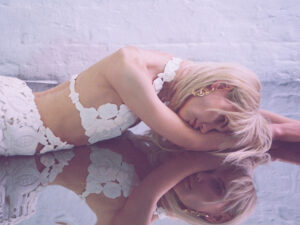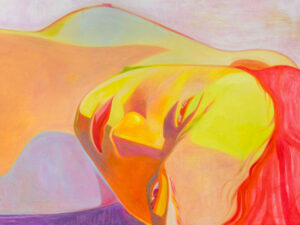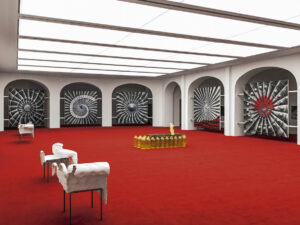These days Manhattan is still a girl’s club but its members aren’t sitting pretty —they’re making New York City a more beautiful place one beat at a time.
IN CONVERSATION WITH ANDREA AND EMILIE OF SPLOOF GAARDEN
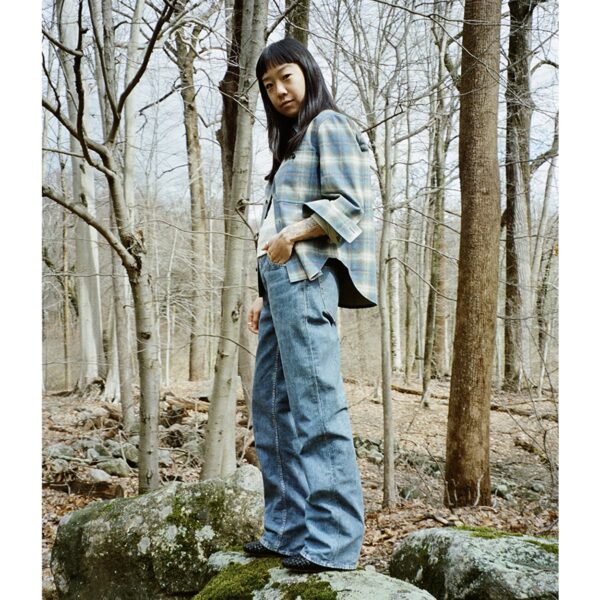
Emilie wears shirt, tank top, trousers, boots and jewelry BOTTEGA VENETA
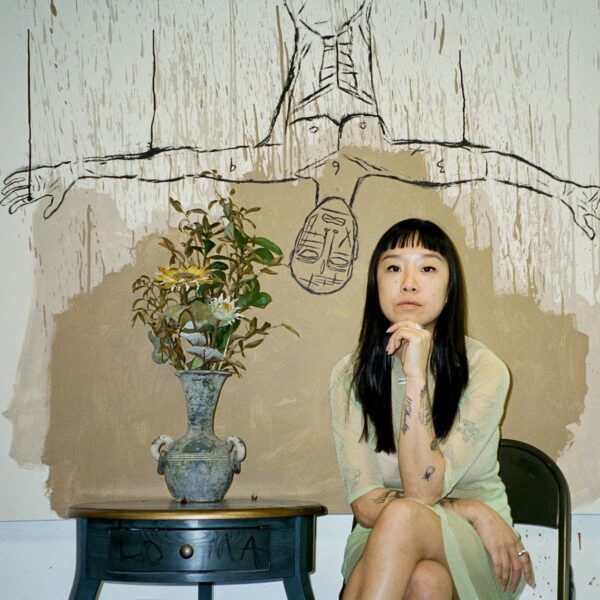
Emilie wears top, bra and skirt MIU MIU
When Västerås-raised producer Andrea Meilgaard and the Seattle-raised graphic designer Emilie Fang met at The Lot Radio in New York the DJ duo “Sploofgaarden” was born. Together their range of sounds is astounding — from a raw blend of progressive house and minimalistic techno with a very acidic feel.
Why do you love DJ’ing? Was being a DJ your main business or do you have another profession/ career?
Andrea: I have a quite demanding full time job as a manager at a design studio here in New York but I love DJ’ing more. I love music and the way it can make me feel. Music is insanely powerful to me. I love dancing and I love club culture. It’s a space to be free and to forget about the world.
Emilie: This is not my main profession, I’m mainly a graphic designer. One of the reasons I love DJing is because it’s the best creative outlet for me outside of my day job. I used to do photography outside of design, but I love this so much more. It’s a lot more than just DJing for me though. I fell in love with techno and the whole world around it because of the sense of community in the space. I’m really in this for life.
Do you find yourselves fully acclimated to the upbeat and ever evolving NYC nightlife scene?
Andrea: I have a pretty good idea of what’s going on in the scene I exist in but I’m learning about new parties, collectives, venues, or sub cultures of the nightlife pretty much on a daily basis which is exciting.
Emilie: Not really. There’s so many parties and clubs in NYC it’s impossible to experience all of them. The problem with New York though is that there’s a lot of quantity over quality. I think in other cities in the US the scene is much smaller, but there’s probably a lot less bullshit that you have to sift through to find what you’re looking for. For the most part I’ve explored a lot in the last few years and now have a good sense of what parties and clubs I like. But I’m sure there are a few I still don’t know about.
Your music is fantastic, the dance floor is always full all night!! How do you get a crowd engaged, energized and in the party spirit?
Emilie: My music taste leans more towards the high-energy stuff, so getting people energized isn’t that hard. But there’s a time and place for everything. That’s our job as a DJ, knowing what to play and when. I don’t believe in playing stuff that you aren’t really feeling to please a crowd either.
Andrea: I agree that it totally depends on what the party/crowd is, what the set time is, and what the context is. I always tailor my set to these variables. I don’t have a go-to list of songs, I try not to play the same songs over and over. It’s important to play from the heart because it usually shows if you don’t and that also impacts the crowd and vibe.
What is your go-to list of songs you play for a party?
Emilie: I don’t really have any. I’m constantly digging for music, it’s nonstop. I buy new tracks every month and play those, mixed with old ones that would fit the vibe I’m going for at each gig. Floating by Setaoc Mass is a track that might have been one of, like, the first 3 techno tracks I ever downloaded.
Andrea: Yeah I don’t have a go-to list either but I have a “Bangers” playlist in rekordbox – but depending on what set I play there will be different bangers [laughs].
How long have you been doing this professionally?
Andrea: Define professionally [laughs] I’ve been DJ’ing since about 2016 but probably more seriously/more frequently in the last 3 years.
Emilie: I had my first opportunity to play a real club gig in May of 2021. It was a weird one though because it was at the tail end of COVID lockdown in New York. Clubs still weren’t open indoors, and my gig was on the rooftop of a club with a capacity of 50 people. Basically there was no dancing allowed because people had to sit down at these tables, that was the loophole.
Who is your target audience? And how did you discover this?
Andrea: Anyone who likes the music I play.
Emilie: I just want to play for people who have the same love and respect for the music and culture that I do. I don’t really care what your background is, you could be a raver that goes out every weekend, or you could be a 50 year old lawyer who’s at a club for the very first time. Techno is not for everyone and you don’t have to like it, but what matters to me is that you come from a place of love and respect.
How extensive is your music library or song list? What other genres can you cover outside of techno?
Emilie: I have around 2,300 tracks on Rekordbox. I definitely keep only like half of that on my USB. I think the hardest part of DJing for me is organizing all that music.The cool thing about techno is that there’s an endless list of sub-genres. I only play techno, but that spectrum is so wide.
Andrea: I have been gathering music since 2016 and back then I played more disco, italo disco and house. I’ve gone through many genres and subgenres since then; ambient, UKG, progressive house, tech house, trance, psytrance, techno, break beats to name a few. I’ve also played a lot of different scenarios, like the Revolver Trade Show during Copenhagen FW which was 8 hours of music for 3 days for a business occasion. This required a whole different type of music than club music.
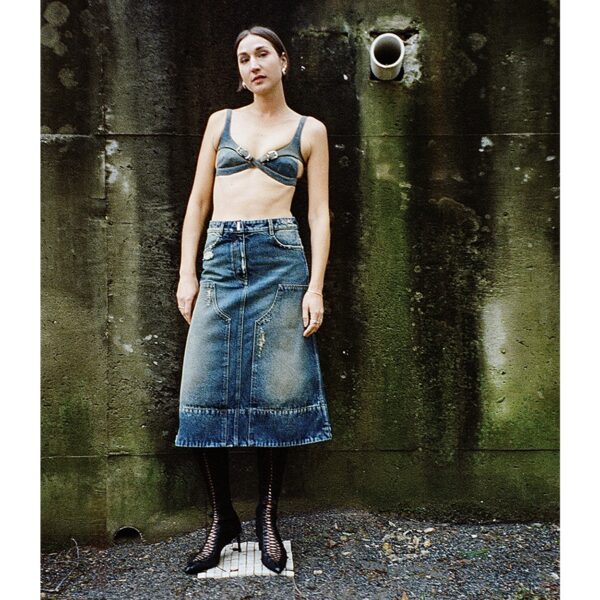
Andrea wear bra, skirt and boots GIVENCHY. Earrings JESSI BURCH and rings ZINNA RUDMAN
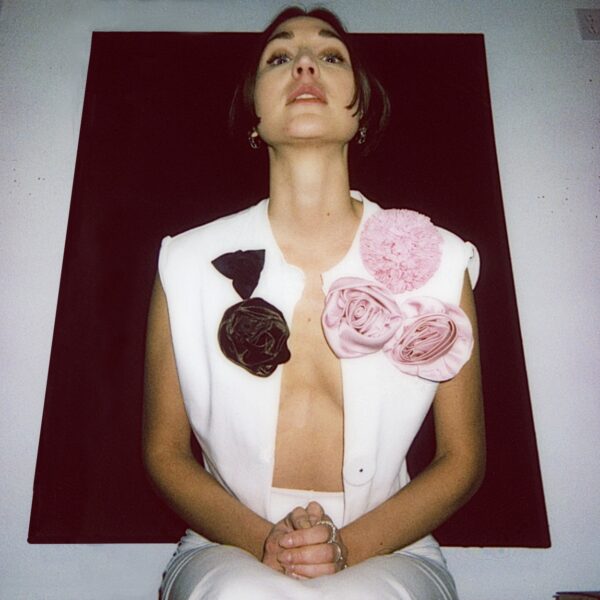
Andrea wears dress PRADA and JESSI BURCH jewelry
Who or what are your musical influences?
Emilie: I’ve always been drawn to stuff that sounds and feels dark and heavy. I’m such a stomper, so music that makes my audience stomp is what I usually go for. Some artists that inspire me right now are: Mama Snake, Anetha, Julia Govor, Dinamite, Sugar, Holden Federico, and Matrixxman.
Andrea: When I first got into dance music I was very inspired by the sound played at legendary places like The Paradise Garage and The Loft, which were two clubs in New York in around the 1980’s. That’s why I started playing disco adjacent music.Right now I like the sound of Roza Terenzi, ISAbella, and Byron Yeates and what they do with their respective labels, collectives, parties, and their overall approach.
If you were to have one musician play while you DJ, who would that be?
Emilie: I really don’t know [laughs]! I really only listen to techno. Maybe something weird like an opera singer? I don’t know!
Andrea: Grace Jones would be sick. Sexy, sexy, sexy.
Living in New York city provides such close access to fashion, how does fashion fit in your artist personal?
Andrea: Fashion, or style, is another form of expression of who you are. Nowadays, style is an inevitable part of your “brand”. I love dressing in cute outfits, but that tends to be the last thing I have time for before a gig; I always put all the time into preparing and practicing for the set so apparel unfortunately comes last.
Emilie: I pretty much wear a uniform everyday: a black tank top and black pants (although I’m on a never ending search for the perfect black pants and top [laughs]. I guess I like the idea of blending in with my outfits, but still having small touches of individuality.
Explain your playing style in terms of one color, one texture and one clothing brand.
Emilie: Black + Nylon = Prada
Andrea: Silver, Smooth, Rave Review.
How do you handle feedback?
Emilie: Feedback is important. I do a lot of self-evaluation after a set, and I try to ask other people what they thought. I want everyone to be honest.
Andrea: It’s a balance. As Emilie mentioned earlier, it’s important to play what you like and think is right, but it’s also important to vibe check with the dancefloor.
What sets you apart from your competition?
Emilie: I guess I always just try to stay focused and do my own thing. I don’t really follow trends and would rather say no to something instead of doing something that doesn’t inspire me or doesn’t make me happy. Curious to know what people from an outside perspective think sets me apart.
Andrea: As much as I hate to think about DJ’ing as a competition, I guess it sort of is as you are competing for gigs. To me, my focus is to work hard and hope that people will like what I play – staying true to what you love is key and there will always be someone out there that will vibe with you.
What is missing in today’s music industry? What kind of things need more visibility?
Andrea: What’s missing is we need to bring in more POC, women and non-binary individuals into positions of power and decision making. With this, I mean as bookers, residents, label owners, curators, club investors, and overall decision makers in the industry. What needs more visibility is education about where dance music comes from and the history of it. Disco, house, and techno are music created and pioneered by black people but appropriated and profited off by white people. It’s up to everyone working in the industry to educate the other participants of the industry (aka people who go clubbing) about this in any way that they can and make sense of what role you are playing. White cis men have been gatekeeping the industry for too long.
Emilie: It’s funny because lately I’ve been going back a lot to the roots of techno, and playing a lot of hypnotic stuff and what’s classified as “pure techno.” I realized that it’s all being produced and played by men. There are of course incredible female artists who do it like Dinamite, Lyza, and Blanka. But the list is very short as far as I’m seeing at a first glance. So yeah, the female artists need more visibility. Everyone should express themselves however they want, but there should be a bit more quality control happening from the promoter side. Don’t allow people to take shortcuts then reward them for that.
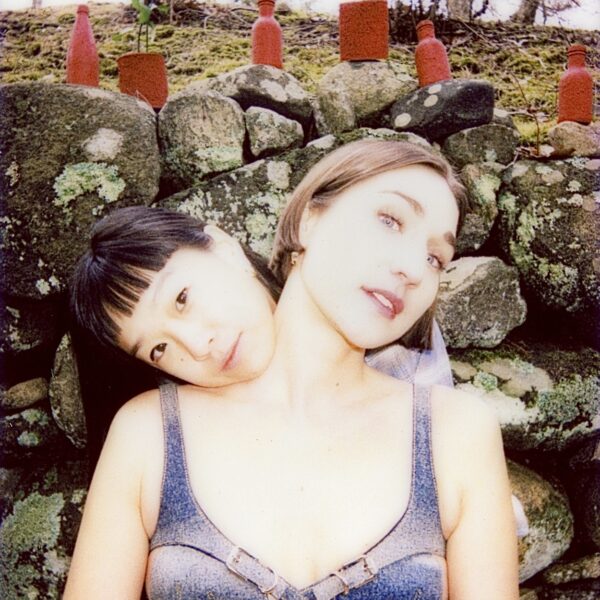
Emilie wears BOTTEGA VENETA Andreas wears bra GIVENCHY and earrings JESSI BURCH
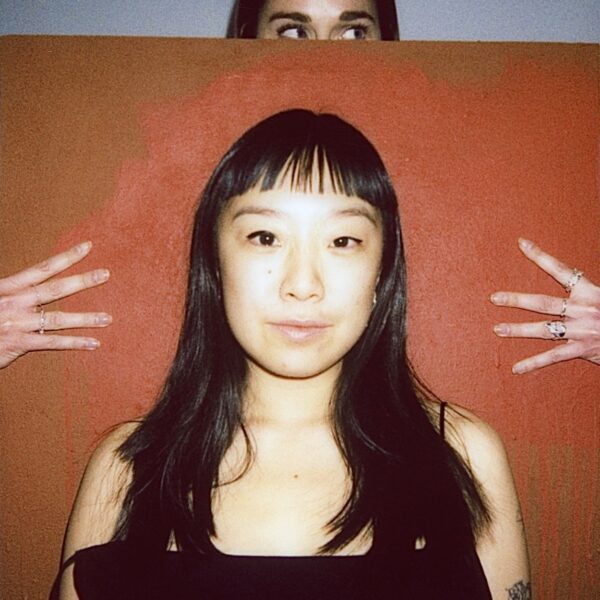
Andrea wears rings ZINNA RUDMAN and JESSI BURCH Emilie wears dress CELINE
How has the techno era influenced your work?
Emilie: My work wouldn’t exist without it.
Andrea: Techno has influenced and shaped music and club culture globally in such a profound way. For me personally, Robert Hood and Floorplan were early inspirations to me. However, I think we’ve been living in a techno era for many years, but it’s getting very saturated and I’m currently not very inspired by techno as a genre.
How have you seen the DJ and its culture influence on the actual production side of mainstream music?
Emilie: Techno has become pretty mainstream in the last few years. So production-wise there’s been a lot of crossover in both directions. Pop has made its way into techno productions, and vice versa.
Andrea: Yeah, I think it’s a constant loop of culture influencing music and music influencing culture (as in for example fashion and art). There has definitely been a rise in edits and as Emilie said, pop samples, in music production.
With all of the technological advances in DJ/music equipment, how has style evolved in terms of mixing and genre playing?
Emilie: I guess there is a lot more control and things you can do with the new CDJs that come out. Personally, it hasn’t really affected me or my style. I’ve always just used loops and the high pass filter. Last year I switched from using the Pioneer mixer to Allen & Heath though, and I don’t think I’ll ever look back. What affects my style more than new CDJs though is a sound system. It’s cool, you have to pay attention and adjust yourself to each situation to maintain control.
Andrea: I think it’s definitely getting easier – the new CDJs 3000’s are super easy to play on. Some DJ;s don’t even learn how to beatmatch these days and just use the sync button which takes out a huge part of the skill and the art, which makes me personally very sad. Again, it feels like we are shifting away from skill to personal brand which I have a really hard time with. I learned to DJ on a very basic piece of gear and that has shaped my mixing style. But I’m trying to be better at embracing and incorporating more “tactics” in my mixing.
If you were to replace one deck with an instrument what instrument would it be?
Emilie: A drum machine or a sampler. I want to do a live set in the future.
Andrea: Drums!
What parties and festivals should we not miss this year (2023)?
Emilie: I’ll probably be at Dekmantel and Sustain Release again this year.
Andrea: Yes, Sustain Release is a given. Movement in Detroit in May, Fourth World in New York in July, and there’s so many festivals happening in Europe in the summer so check the lineups and go from there!
Can you tell us more about your plans for the coming 6 months? Do you have any new productions/collaborations we could look forward to?
Emilie: We’re still trying to figure out and plan our summer, but I think you can expect to see me and Andrea back with more Sploof Gaarden parties in Copenhagen and Amsterdam this year.
Andrea: I have a track coming out on Sorry Records which I’m super excited about. Besides that just playing gigs, enjoying life and being thankful for all the opportunities I get.

